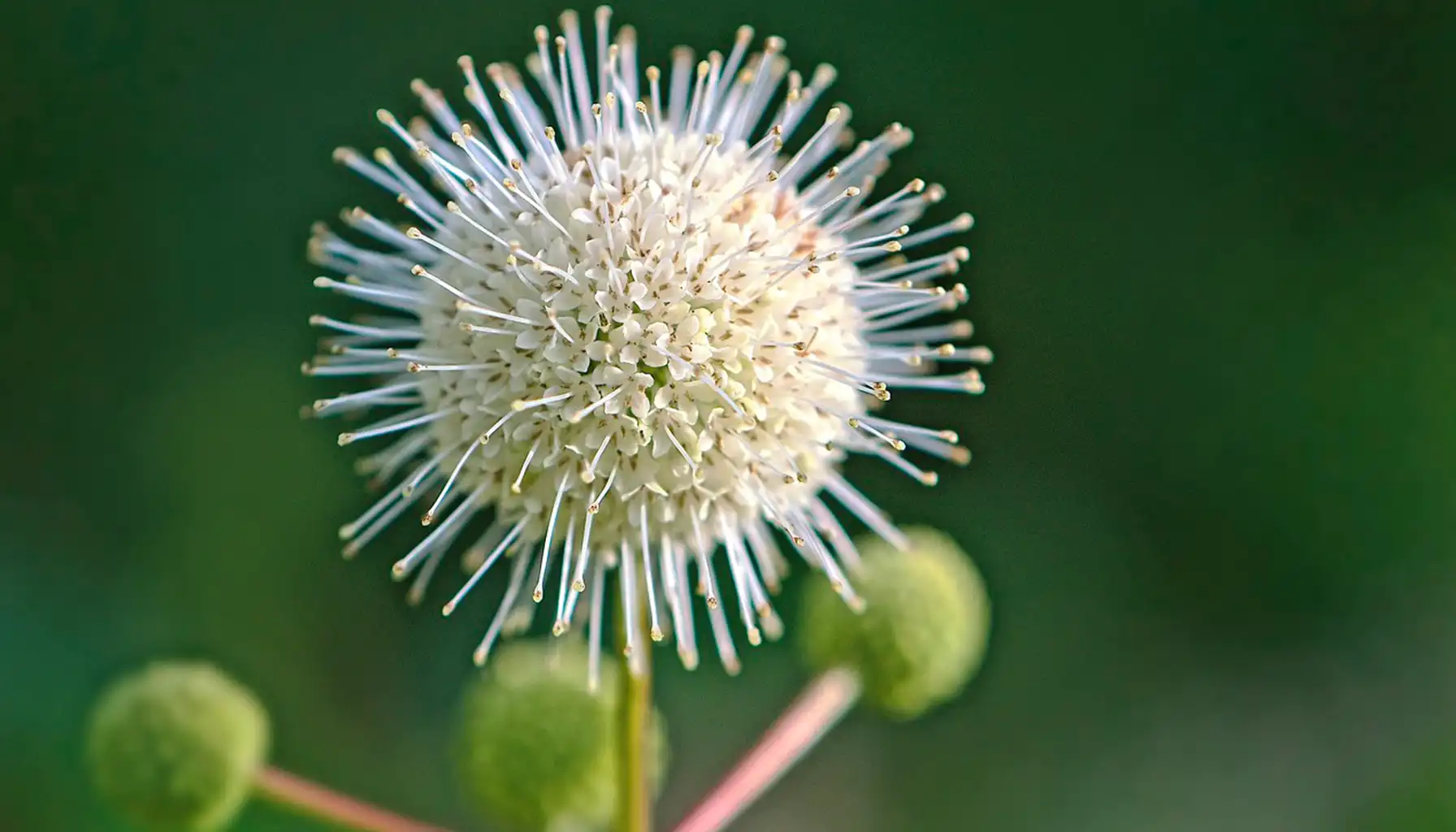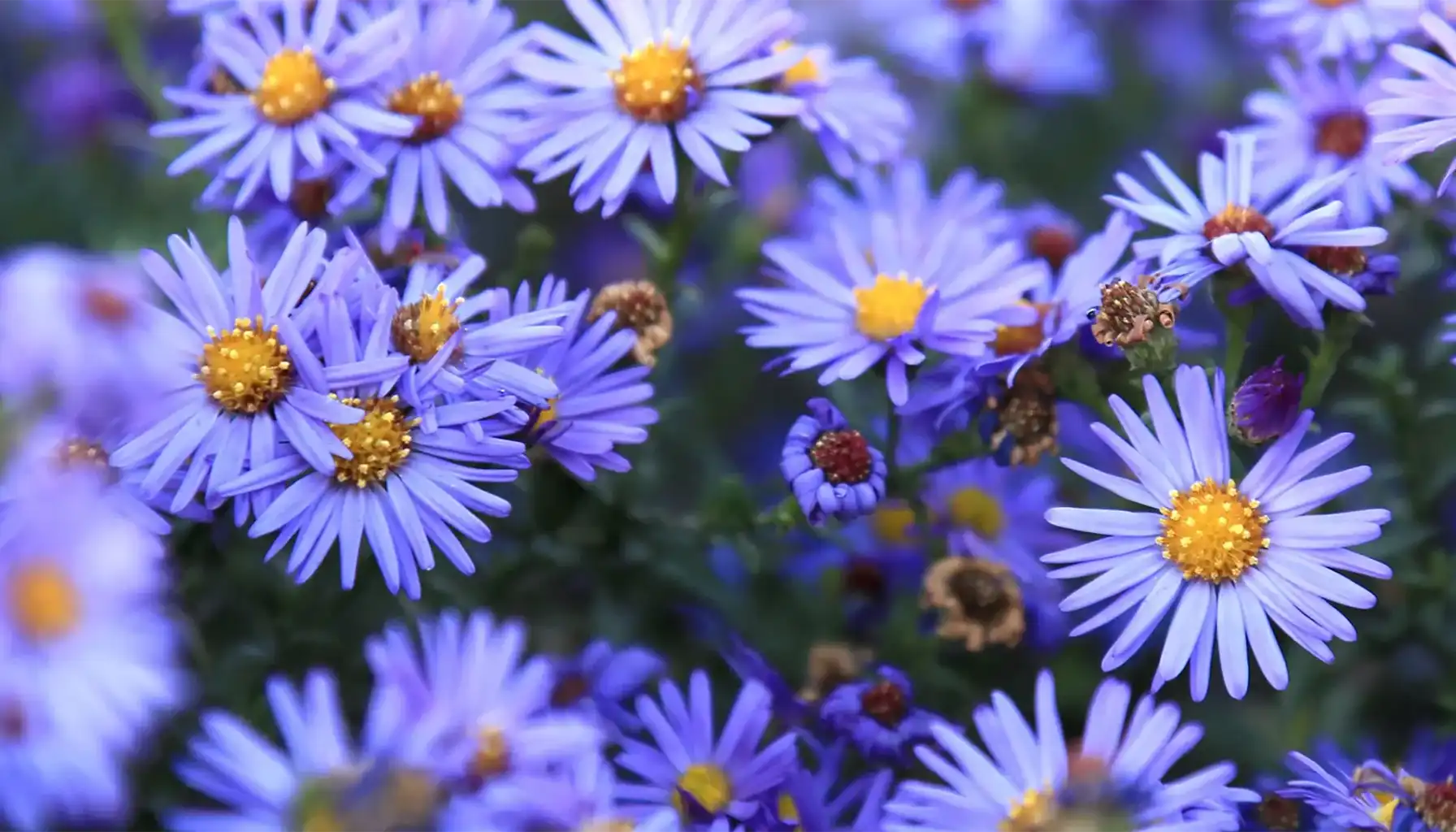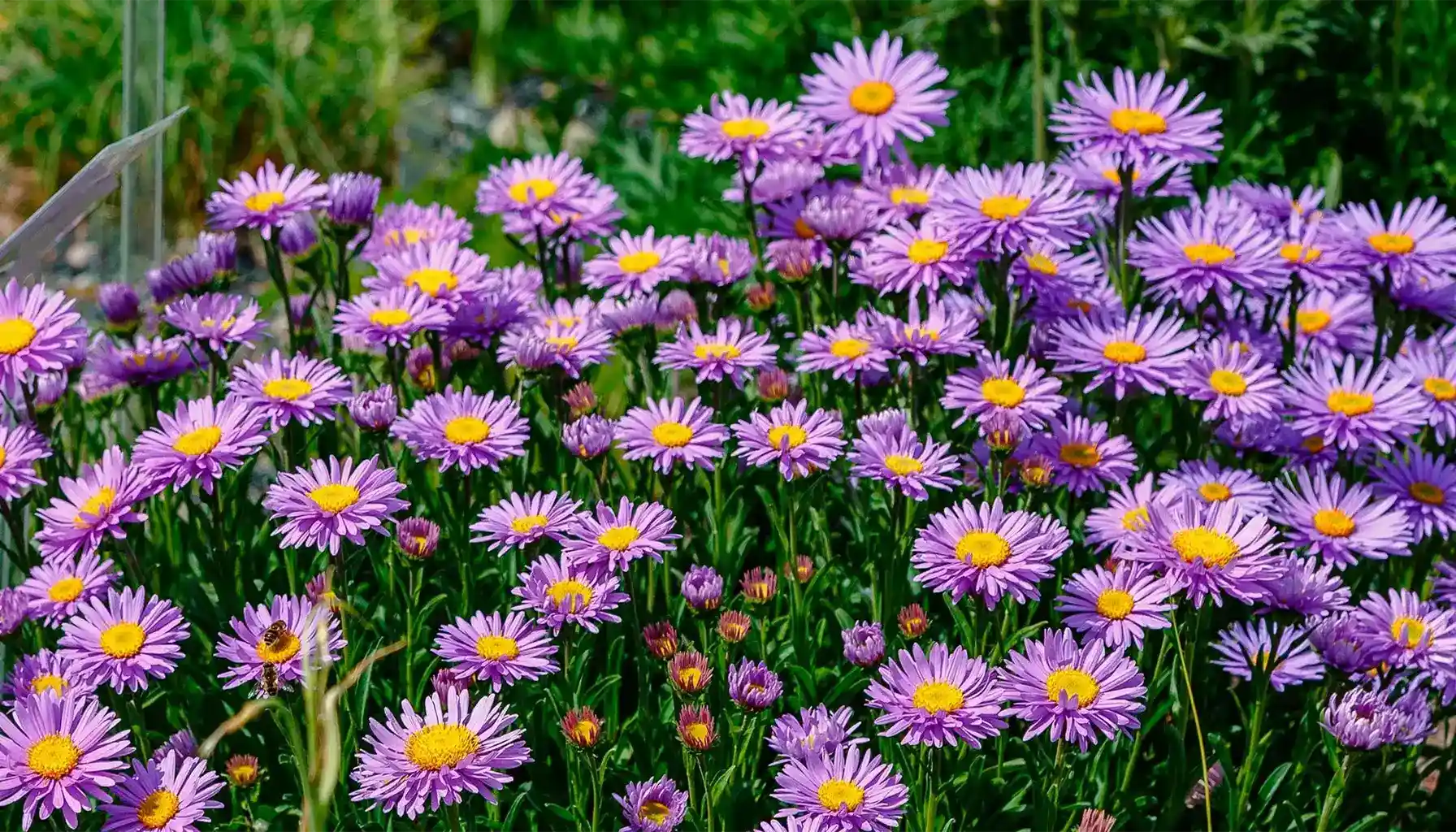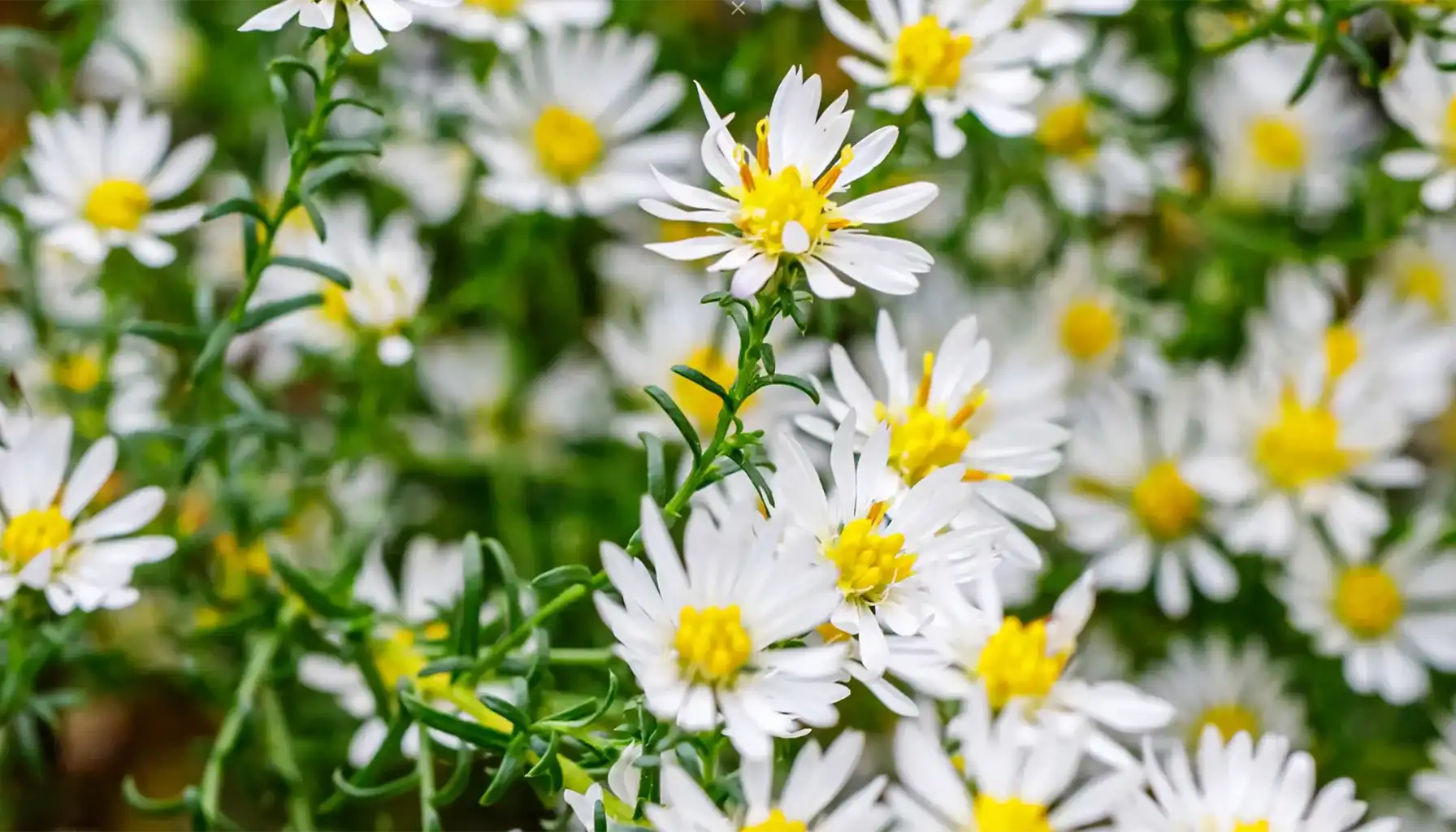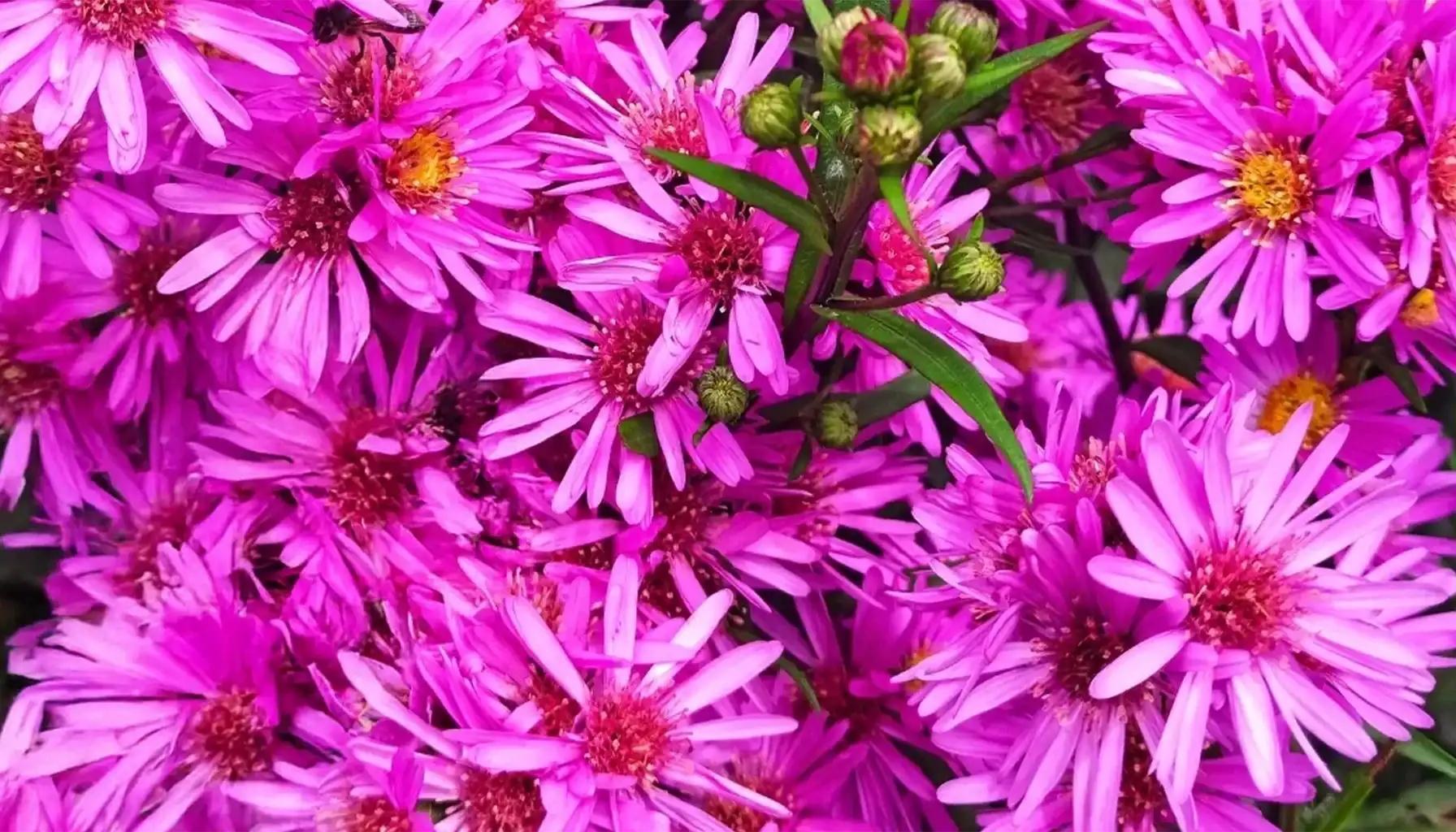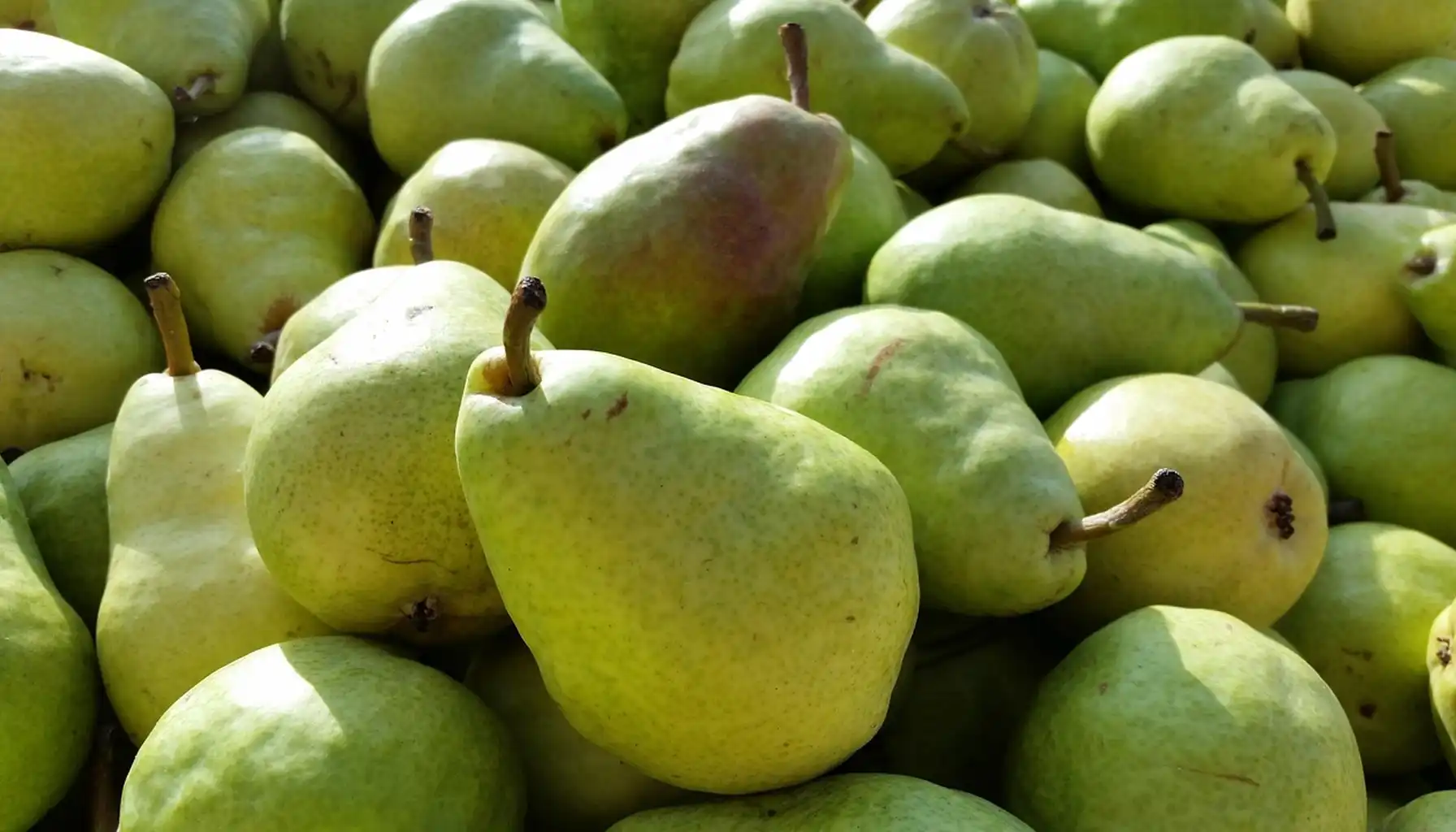Asters flowers have star-shaped blooms and a wide color range. They are the most common choice for late summer and fall. You can fill borders, meadows, and containers with these colorful plants and support essential pollinators.
These flowers are pretty easy to take care of, but several pests can still get them. Scan your flower with a Plant ID app and get instant feedback on how to treat it.
Do you want to have daisies for a bit longer? Or maybe you can’t grow them for some reason (read more about this flower: Growing Daisies from Seed). Well, sadly, those grow in the spring-summer only, but asters basically look the same. Their daisy-like blossoms attract bees, butterflies, and other insects when nectar is scarce elsewhere. You can pair them with goldenrods, for example, to sustain wildlife before winter.
Basics: Botany, Native vs. Garden Forms
Asters belong to the daisy family, Asteraceae, and have more than 170 species with star-shaped flower heads. In recent decades, botanists have reclassified many North American asters into the genera Symphyotrichum, Eurybia, and others.
True Aster species are now mostly European and Asian. Despite the name changes, gardeners still refer to them all simply as asters.
Are asters perennials? Yes, most species are perennial; they can return each year with little effort. They thrive in USDA Zones 3-8, forming clumps or spreading slowly by rhizomes depending on the species. You can make a beautiful path in your garden along with other flowers, read more here: Planting by the Path: The Best Bluestone Perennials in 2025
These flowers have yellow centers surrounded by narrow ray petals in purple, blue, pink, or white. Heights range from under a foot to over four feet, so you have design options for borders, rock gardens, or naturalized areas. Their late blooms fill the gap between summer perennials and autumn ones.
Many wild asters, like New England (Symphyotrichum novae-angliae) and smooth aster (S. laeve), are native to North America, which is great news for pollinators. Native species are now widely planted in naturalistic and meadow-style gardens.
Asters and Goldenrod: Ecology & Pollinators
If you plant asters and goldenrod together, you will support wildlife in late summer and fall. This time of the year, many flowers fade, but these flowers give a nectar and pollen source for honeybees, native bees, hoverflies, and migrating butterflies such as monarchs, which rely on late-season fuel for their journey south.
Asters have flat, open flower heads that make pollen easy to access, and goldenrods give dense clusters of blooms rich in nectar. Seed heads that follow the flowers become winter food for finches and sparrows.
Also, asters create habitat. Their stems can be left standing through winter as a nesting site for solitary bees. In early spring, delay cutting them back until temperatures rise to 50°F to avoid harming overwintering insects.
Color & Popular Types
Gardeners love the range of colors and forms found among the many types of asters, you can choose from:
New England asters (Symphyotrichum novae-angliae) are among the most popular. They can reach 4 feet or more, blooming from late summer into fall. Their dense clusters of purple asters with golden centers attract clouds of butterflies and bees. They perform best in full sun with consistent moisture
For lighter hues, white asters such as heath aster (S. ericoides) or calico aster (S. lateriflorum) brighten borders and pair beautifully with ornamental grasses They stay shorter (around 1 to 2 feet) and spread gently, perfect for naturalistic plantings
If you prefer cool tones, blue asters like smooth aster (S. laeve) have lavender-blue petals and tidy clumps that resist mildew. They’re ideal for sunny slopes or prairie gardens
Try red asters or pink-flushed selections such as Aster novi-belgii ‘Jenny’. Though it’s technically more magenta than true red
Common Name | Latin Name | Height | Bloom Window | Color | Notes |
New England Aster | Symphyotrichum novae-angliae | 3–5 ft | Aug–Oct | Purple | Tall, bold, attracts butterflies |
New York Aster | S. novi-belgii | 2–4 ft | Aug–Oct | Pink–Lavender | Great border plant, mildew-prone |
Smooth Aster | S. laeve | 2–3 ft | Aug–Sep | Blue–Lavender | Mildew resistant, upright clumps |
Heath Aster | S. ericoides | 1–2 ft | Sep–Oct | White | Fine texture, good groundcover |
Calico Aster | S. lateriflorum | 2–3 ft | Sep–Oct | White w/ pink centers | Shade tolerant, airy growth |
Alpine Aster | Aster alpinus | 8–12 in | May–Jun | Purple/Blue | Early bloomer, good for rock gardens |
‘Jenny’ Aster | A. novi-belgii ‘Jenny’ | 1–2 ft | Aug–Sep | Red–Magenta | Compact, vivid blooms for containers |
Planting: When, Where, and How
The best time to establish an asters plant is during mild weather, either in spring or early fall, so roots can settle before extreme temperatures arrive.
Choose a location with full sun (at least 6 hours daily) and well-drained, moderately rich soil. Asters prefer neutral to slightly acidic conditions and appreciate consistent moisture, though they dislike soggy ground.
When deciding when to plant asters, timing depends on your climate. You can plant them in spring for full root development before the heat sets in, but fall planting takes advantage of cooler air and warm soil. Avoid planting during high summer or frost periods.
Before planting, loosen soil 8 to 10 inches deep and mix in compost. Space plants according to mature size (typically 12–24 inches apart) for airflow and mildew reduction. For container growing, use a pot with good drainage and a potting mix.
Planting Window by Region
Region | Best Month(s) | Spacing | Site Tips |
Northeast / Midwest | April–May; Sept | 18–24 in | Full sun, good drainage |
South | Oct–Nov; Feb–Mar | 12–18 in | Morning sun, mulch to retain moisture |
West Coast | Mar–Apr; Oct | 18–24 in | Add compost to sandy soils |
Mountain States | May–Jun | 12–18 in | Shelter from harsh wind |
Pacific Northwest | Apr–May; Sept | 18–24 in | Avoid overly wet sites |
Care Through the Season
Caring for asters means focusing on steady moisture, good airflow, and seasonal grooming.
Keep soil evenly moist, especially during the first year and midsummer dry spells. Deep watering once a week encourages deep roots. Avoid overhead watering to prevent powdery mildew
Apply a 2-inch layer of organic mulch in spring. This keeps roots cool, conserves moisture, and suppresses weeds. Refresh yearly
Use a balanced, slow-release fertilizer in early spring. Too much nitrogen encourages leaves over blooms
For bushier growth and more blooms, pinch back stems by one-third in late May or early June, often called the “Chelsea chop.” Stop pinching by mid-July so buds can form
Tall varieties like New England may need support. Install stakes or ring supports early, before plants flop
Split clumps every 2–3 years in spring or fall to prevent overcrowding and rejuvenate growth
Potted asters dry faster, check moisture frequently and feed monthly with diluted liquid fertilizer
What Month Do Asters Bloom?
When do asters bloom? Most garden flowers from late summer through fall, between summer perennials and chrysanthemums or any other fall flowers (here is info on what you can plant in the fall Must-Grow Flowers for Fall: What Flowers Are Best for the Fall Season? In cool northern regions, blooms typically begin in August and continue into October. In milder southern areas, flowering can start as early as July and stretch well into November.
Bloom performance is strongly influenced by sunlight, moisture, and airflow. They need at least six hours of sun daily to produce abundant flowers. Too much shade can lead to weak stems and fewer blooms.
Spring. Divide old clumps. Add compost, apply mulch, and fertilize lightly
Early Summer. Pinch stems. Stake tall types and water weekly
Mid to Late Summer. Remove weeds. Watch for mildew and maintain moisture.
Early Fall. Enjoy flowers. Deadhead spent blooms and cut back stems only after frost
Post-Bloom / Late Fall. Leave some seed heads for birds, mulch lightly before winter
Winter / Early Spring. Delay cutting old stems until temperatures reach 50°F to protect overwintering insects
During autumn, fall asters bring fresh color when most perennials fade. Pair them with ornamental grasses, sedums, or mums.
Deadheading (removing spent blossoms) helps extend blooming and keeps the plant tidy. After flowering finishes, you can leave some seed heads for birds or cut stems back to the ground once frost has fully blackened the foliage.
Different types bloom at slightly different times:
Early bloomers: Alpine asters, flowering in late spring to early summer
Mid-season: Smooth and New York asters, opening in August
Late-season: New England asters, shining from September through October
Troubleshooting & Problems
Even well-tended asters can show stress from time to time. The most common issues are powdery mildew, yellowing leaves, and legginess.
If you notice asters yellow in summer, it could signal several things: nutrient deficiency, drought stress, overcrowding, or aster yellows disease. Start by checking watering habits and soil conditions before assuming disease.
Powdery mildew appears as a white coating on leaves, often during humid weather or when plants are too crowded. It’s unsightly but rarely fatal. Improve air circulation, water at the base, and remove infected foliage.
Yellow leaves is a more serious problem caused by a phytoplasma spread by leafhoppers. Symptoms are pale, twisted leaves, green, distorted flowers, and stunted growth. Unfortunately, there’s no cure; remove and destroy affected plants to prevent spread.
Problem | Likely Cause | Fix |
Powdery mildew | Poor airflow, overhead watering | Space plants 18–24 in apart. Water at soil level. Remove affected leaves. |
Aster yellows | Phytoplasma via leafhoppers | Remove infected plants. Control weeds. Avoid replanting in same spot. |
Nutrient stress | Low fertility | Apply balanced fertilizer in spring. Add compost annually. |
Drought stress | Irregular watering | Water deeply once a week. Mulch to conserve moisture. |
Overcrowding | Lack of division | Divide every 2–3 years. Replant with proper spacing. |
Deer, Rabbits, and Pets
Do deer eat asters? Deer tend to prefer tender young shoots and may nibble newly planted asters, especially during food shortages. Once mature, many varieties become less appealing because of coarse texture and aromatic foliage.
Are asters deer resistant? They’re moderately resistant; they aren’t a top choice, but hungry deer might still sample them. Fencing, repellents, or interplanting with strongly scented herbs (like sage or lavender) can reduce browsing. Rabbits occasionally graze on young growth too, so early-season vigilance helps.
Pet Safety
If you’re worried about cats, the good news is that asters are not poisonous to cats. Both the ASPCA and veterinary sources list them as non-toxic. But it’s best to discourage chewing on any plant.
Height, Spread, and Garden Uses
How tall do asters grow? Dwarf selections like alpine ones stay under 1 foot, ideal for edging or rock gardens. Mid-sized varieties such as smooth and heath grow 1–2 feet tall, forming neat mounds suited for front borders or containers. Taller types like New England and New York asters can reach 3–5 feet.
Do asters spread? Asters typically spread 1–3 feet, forming clumps over time. For layered plantings, place taller asters at the back, mid-height forms in the center, and compact varieties near paths or garden edges.
Asters also live in large containers. Combine dwarf types with trailing ivy or variegated foliage plants.
Spread & Propagation
To keep plants healthy and blooming, divide clumps every 2–3 years in early spring or fall. Replant divided sections at the same depth, spacing them 12–24 inches apart.
Asters can also be propagated by cuttings. Take 3–4 inch stem cuttings in late spring, remove lower leaves, and root them in moist potting mix under light shade. Keep evenly moist until new roots form.
Seed propagation is possible but less predictable since hybrids may not produce true-to-type offspring. Sow seeds outdoors in fall or indoors in late winter after a short cold period to improve germination.
Native Flowers & Site-Matched Choices
Native asters have adapted to regional soils and climates; they need less maintenance and give nectar and pollen for native bees and butterflies.
In the eastern United States, New England aster (Symphyotrichum novae-angliae) and New York aster (S. novi-belgii) grow in sunny meadows and moist soils, attracting monarchs and late-season pollinators.
Smooth aster (S. laeve) and sky blue aster (S. oolentangiense) tolerate dry, rocky sites and have rich fall color with minimal care. In woodland edges, heart-leaved aster (S. cordifolium) performs well in partial shade.
To find region-appropriate plants, check native plant lists from local botanical gardens or extension services. Many nurseries now label selections as “native” to simplify choices.
Conclusion
They’re simple to grow: give them sun, well-drained soil, and steady moisture. Regular pinching and division keep them full and healthy. Most species return year after year with minimal effort, brightening autumn landscapes.
FAQs
Are asters perennials?
Yes. Most garden asters are hardy perennials that return each year from their root systems. With proper sunlight and moisture, they bloom reliably every late summer and fall.
When to plant asters?
Plant in spring after the soil warms or in early fall so roots can establish before frost. Avoid planting during peak summer heat or freezing conditions.
What month do asters bloom?
Asters bloom from August through October. In warmer regions, flowering may start as early as July and continue until November.
Are they deer-resistant?
They’re moderately deer-resistant. Deer may nibble young shoots but usually avoid mature plants with aromatic foliage.
Are they poisonous or toxic to cats?
No. Asters are non-toxic to cats and other household pets, according to veterinary and ASPCA references.
Do asters spread?
Yes, slowly. Most grow outward by rhizomes or clumping roots, which can be divided every 2–3 years to manage size.
How tall do they grow?
Height ranges from under 1 foot for dwarf alpine varieties to 5 feet for tall species like New England asters.
Related AI Plant Finder Posts
